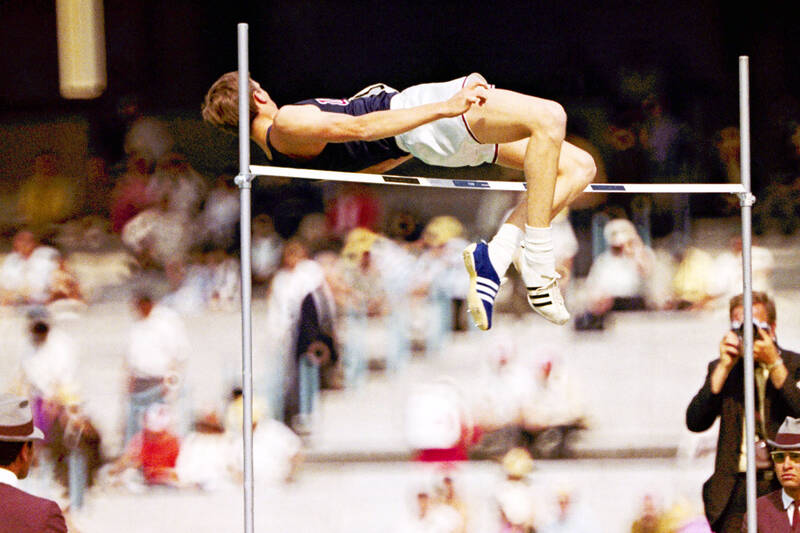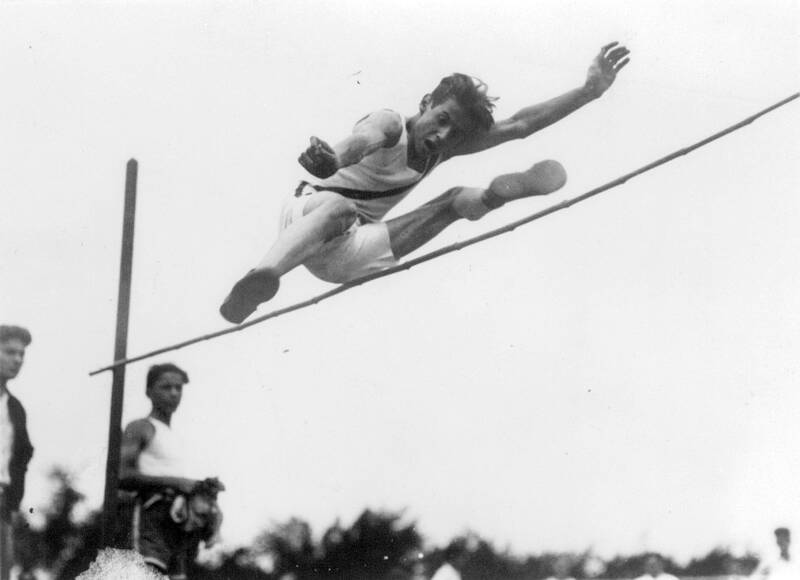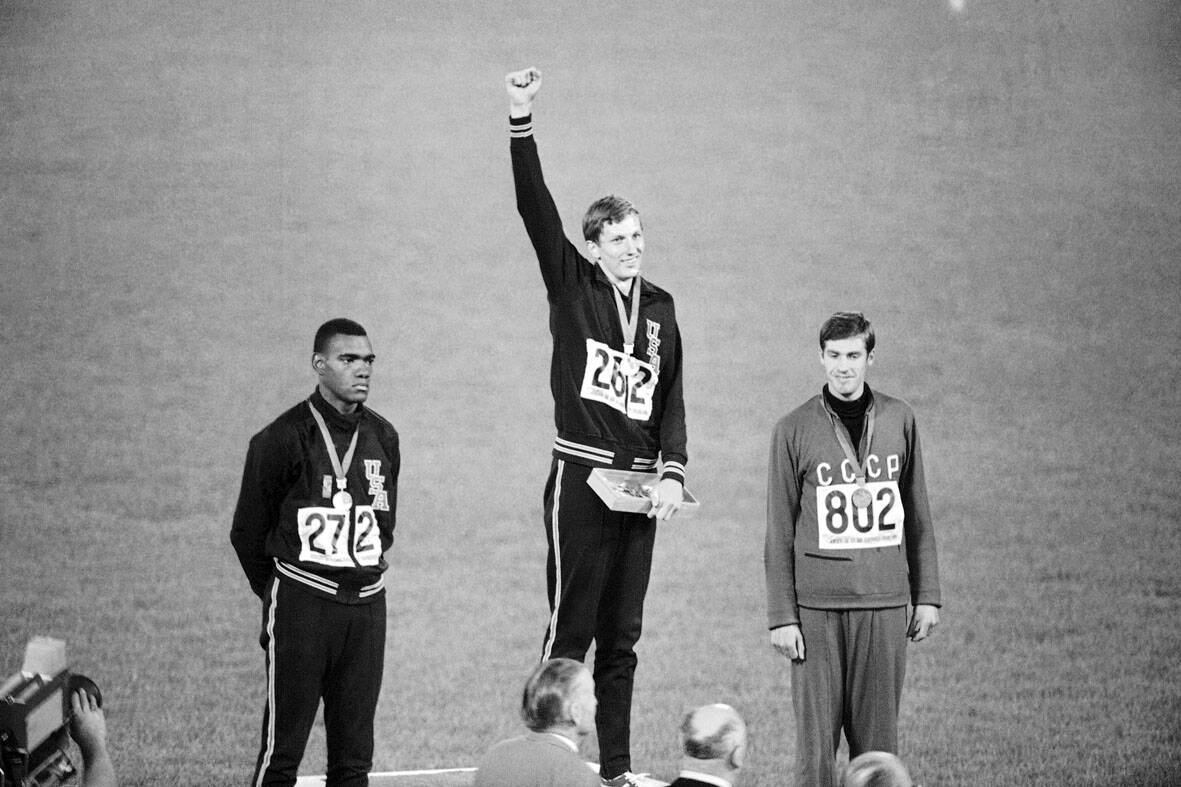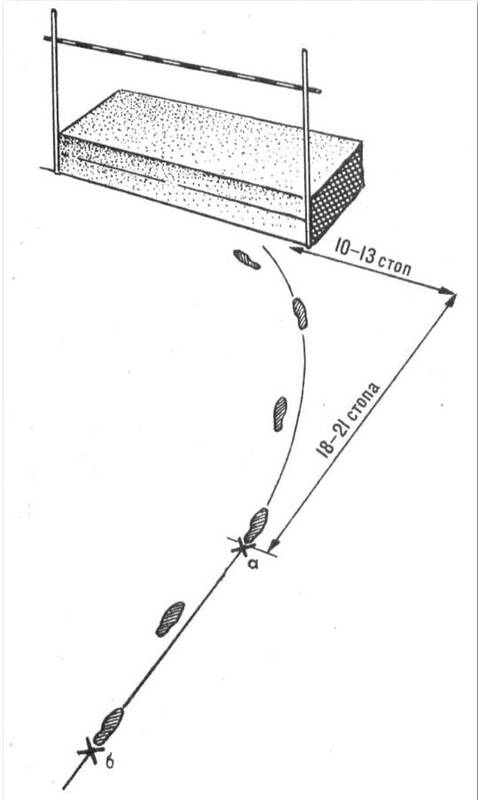Dick Fosbury, the lanky leaper who revamped the technical discipline of high jump and won an Olympic gold medal with his “Fosbury Flop,” died on Sunday last week. He was 76.
Before Fosbury, many high jumpers cleared their heights by running parallel to the bar, then using a straddle kick to leap over before landing with their faces pointed downward. At the 1968 Mexico City Olympics, Fosbury took off at an angle, leaped backward, bent himself into a “J” shape to catapult his 6-foot-4 frame over the bar, then crashed headfirst into the landing pit.
It was a convention-defying move, and with the world watching, Fosbury cleared 2.24 meters to win the gold and set an Olympic record. By the next Olympics, 28 of the 40 jumpers were using Fosbury’s technique. The Montreal Games in 1976 marked the last Olympics in which a high jumper won using a technique other than the Fosbury Flop.

Photo: AP 照片:美聯社
Over time, Fosbury’s move became about more than simply high jumping. It is often used by business leaders and university professors as a study in innovation and willingness to take chances and break the mold.
“It’s literally genius,” said 2012 Olympic high jump champion Erik Kynard Jr. “And it takes huge courage, obviously. And took huge courage at the time to even consider something so dangerous. Due to the equipment then, it was something that was a little on edge to attempt.”
Fosbury started tinkering with a new technique in the early ‘60s, as a teenager at Medford High School in Oregon. Among his discoveries was a need to move his takeoff point farther back for higher jumps, so he could change the apex of the parabola shape of his jump to clear the bar. Most traditional jumpers of that day planted a foot and took off from the same spot regardless of the height they were attempting.

Photo: Wikimedia Commons 照片:維基共享資源
“I knew I had to change my body position, and that’s what started first the revolution, and over the next two years, the evolution,” Fosbury said in a 2014 interview with The Corvallis Gazette-Times. “During my junior year, I carried on with this new technique, and each meet I continued to evolve or change, but I was improving. My results were getting better.”
The technique was the subject of scorn and ridicule in some corners. The term Fosbury Flop is credited to the Medford Mail-Tribune, which wrote the headline “Fosbury Flops Over the Bar” after one of his high school meets. The reporter wrote that Fosbury looked like a fish flopping in a boat.
(AP)

Photo: Wikimedia Commons 照片:維基共享資源
迪克.福斯貝利,這位瘦長的跳高運動員已於上週日去世,享壽76歲。他改造了跳高的技術訓練,並以其「福斯貝利跳」贏得奧運金牌。
在福斯貝利之前,許多跳高運動員採用的過竿技巧是以平行角度跑向橫竿,然後跨腿跳過去,面朝下之後著墊。在1968年墨西哥城奧運中,福斯貝利以一個角度起跳,向後一躍,將身體彎曲成「J」字形,將他6呎4吋的身軀彈射過竿,然後頭朝下墜入跳高墊。
這是個違反慣例的動作,在全世界的注視下,福斯貝利跳出了2.24公尺的成績,贏得金牌並創下奧運紀錄。到了下一屆奧運會,40名跳高選手中有28人採用了福斯貝利的技巧。1976年的蒙特婁奧運為跳高選手以福斯貝利跳以外之技巧獲勝的最後一屆奧運。

Photo: AP 照片:美聯社
漸漸地,福斯貝利的作為變得不僅僅只是跳高;它常被商業領袖和大學教授用作創新及願意冒險和打破常規的研究對象。
「這簡直就是天才」,2012年奧運跳高冠軍小艾瑞克‧凱納德說。「這顯然需要很大的勇氣。光是想到要做這危險的事都是勇氣十足。鑒於當時的設備,嘗試這樣跳有點令人提心吊膽」。
福斯貝利在60年代初開始琢磨一項新技巧,那時他還是青少年,在美國奧勒岡州梅德福唸高中。他其中一個發現是,若要跳更高,需要將起跳點向後移,這樣就可以改變他跳躍的拋物線頂點的位置來過竿。當時大多數傳統的跳高選手都會在同一個點踩地起跳,無論其試跳高度為何。

Photo: Wikimedia Commons 照片:維基共享資源
福斯貝利在2014年接受科瓦利斯報訪問時說:「我知道我必須改變身體姿勢,這開啟了革命,以及之後兩年的演變」。「我在大三時繼續使用這新技巧,每次比賽我都繼續成長或改變,但我在進步。我的成績越來越好」。
這項技術在某些地方成為輕蔑和嘲笑的對象。「福斯貝利跳」(Fosbury Flop,字面意為「福斯貝利撲騰」)一詞源自梅德福論壇郵報,該報在福斯貝利一次高中比賽後下了標題「Fosbury Flops Over the Bar」(福斯貝利撲騰過竿)。記者寫道,福斯貝利看起來就像船上一條撲騰的魚。
(台北時報林俐凱編譯)

In an effort to fight phone scams, British mobile phone company O2 has introduced Daisy, an AI designed to engage phone con artists in time-wasting conversations. Daisy is portrayed as a kindly British granny, exploiting scammers’ tendency to target the elderly. Her voice, based on a real grandmother’s for authenticity, adds to her credibility in the role. “O2” has distributed several dedicated phone numbers online to direct scammers to Daisy instead of actual customers. When Daisy receives a call, she translates the scammers’ spoken words into text and then responds to them accordingly through a text-to-speech system. Remarkably, Daisy

Bilingual Story is a fictionalized account. 雙語故事部分內容純屬虛構。 Emma had reviewed 41 resumes that morning. While the ATS screened out 288 unqualified, she screened for AI slop. She could spot it a mile away. She muttered AI buzzwords like curses under her breath. “Team player.” “Results-driven.” “Stakeholder alignment.” “Leveraging core competencies.” Each resume reeked of AI modeling: a cemetery of cliches, tombstones of personality. AI wasn’t just changing hiring. It was draining the humanity from it. Then she found it: a plain PDF cover letter. No template. No design flourishes. The first line read: “I once tried to automate my

Every May 1, Hawaii comes alive with Lei Day, a festival celebrating the rich culture and spirit of the islands. Initiated in 1927 by the poet Don Blanding, Lei Day began as a tribute to the Hawaiian custom of making and wearing leis. The idea was quickly adopted and officially recognized as a holiday in 1929, and leis have since become a symbol of local pride and cultural preservation. In Hawaiian culture, leis are more than decorative garlands made from flowers, shells or feathers. For Hawaiians, giving a lei is as natural as saying “aloha.” It shows love and

1. 他走出門,左右看一下,就過了馬路。 ˇ He walked outside, looked left and right, and crossed the road. χ He walked outside and looked left and right, crossed the road. 註︰並列連接詞 and 在這句中連接三個述語。一般的結構是 x, y, and z。x and y and z 是加強語氣的結構,x and y, z 則不可以。 2. 他們知道自己的弱點以及如何趕上其他競爭者。 ˇ They saw where their weak points lay and how they could catch up with the other competitors. χ They saw where their weak points lay and how to catch up with the other competitors. 註:and 一般連接同等成分,結構相等的單詞、片語或子句。誤句中 and 的前面是子句,後面是不定詞片語,不能用 and 連接,必須把不定詞片語改為子句,and 前後的結構才相等。 3. 她坐上計程車,直接到機場。 ˇ She took a cab, which took her straight to the airport. ˇ She took a cab and it took her straight